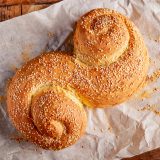Most bread bakers are on the lookout for a utility loaf: an everyday bread that is all-purpose, has a good crisp crust and big flavor and is a tad more exciting than the typical rustic boule or Pullman loaf. Here at Milk Street, we think that pane siciliano is that loaf, a bread made, in part, with semolina flour, which provides a thick, crispy crust—great for sandwiches—and a naturally sweet, slightly yellow crumb, which helps it stand up to other flavors.
Let’s begin with the semolina. High-protein durum wheat, from which semolina is made, is grown all over southern Italy and is the bread flour of choice in Sicily. Semolina is a slightly yellowish, coarsely ground durum wheat that is ideal for pasta. However, a coarse grind is not ideal for bread—you want a finer grind for water absorption and texture, and that is why Italians use “semolina rimacinata,” which means remilled or twice-milled semolina. So, in short, a finely ground semolina is what you are looking for; do not use coarse-grind. (You can also use a fine durum wheat flour if you can find it.)
Baking bread with semolina flour, however, has a problem. The dough is not elastic or extensible. (When you pull on a semolina dough, it doesn’t snap back.) This produces a heavier loaf, since elasticity is key to a good rise and a lighter bread. However, semolina’s flavor, color and crisp crust are highly desirable, so the solution is to cut the semolina flour with regular bread flour—we decided on roughly two parts semolina to one part bread flour.
The basic recipe is breadmaking 101. We considered using a poolish or pre-soak to hydrate the high-protein semolina, but this extra step did not prove necessary. We did increase the hydration level (the weight in grams of the water divided by the weight of the flour) to just over 70 percent, which is on the high side for many bread doughs but not dissimilar to a Tuscan loaf.
For shaping, you can make a long straight loaf, but we prefer the traditional “S” shape called occhi (eyes) di Santa Lucia. A 30-inch rope of dough is shaped, and then each end is rolled up toward the middle. (The center of each swirl was often accented with an olive, hence the “eyes.” Another typical shape is “Mafalda,” which resembles a snake coiled back on itself.) We found that a steamy environment was helpful—it allows the bread to fully rise in the oven before it sets, which produces a crispier crust through better starch gelatinization. We tried a few different methods for creating steam. The winner was preheating a 9-by-13-inch baking pan and then pouring in 3 cups of very hot water as soon as the bread goes in. The oven is moderate at 375°F, baking time is 35 to 40 minutes, and the loaf is brushed with a honey/water mixture and sprinkled with sesame seeds just before baking.
Pane siciliano started as an everyday loaf, and it remains one today, but with an appeal that goes well beyond the shores of Sicily.
Sicilian Semolina and Sesame Bread
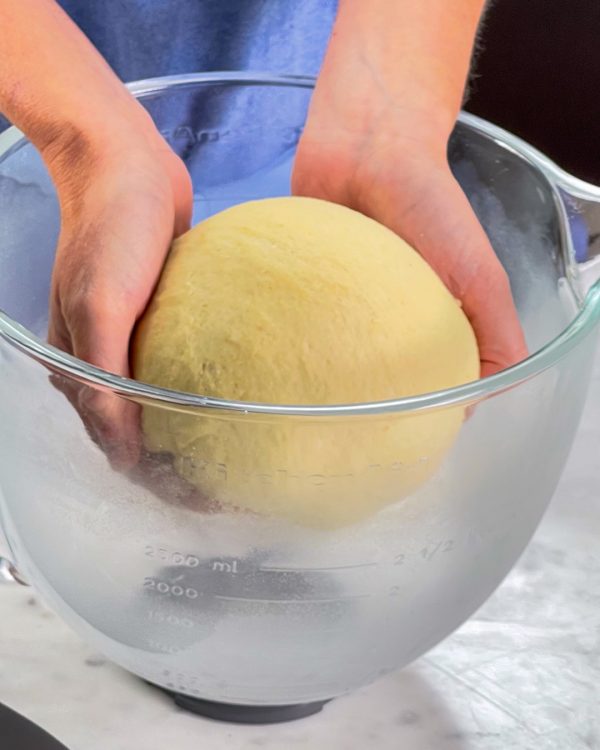
1. Using your hands, form the dough into a ball in the bowl, cover with plastic wrap and let rise at room temperature until doubled.
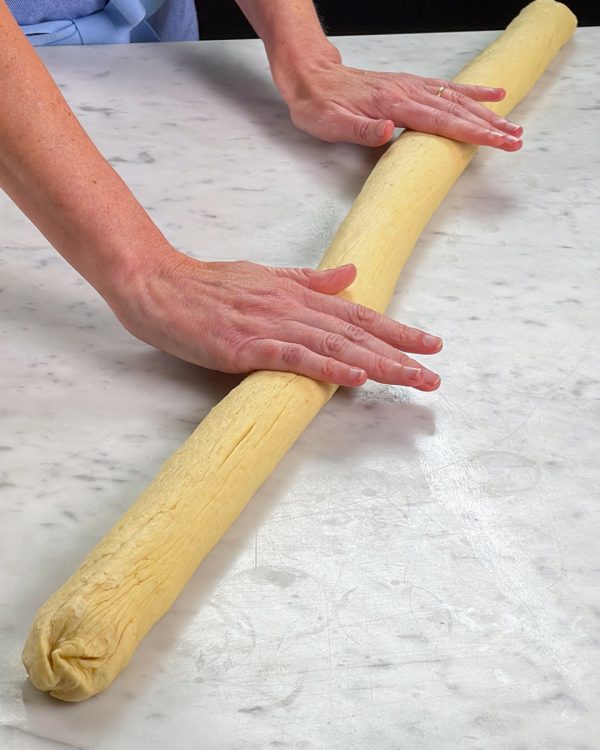
2. Form the dough into a thick log. Roll it back and forth against the counter, stretching it into an evenly thick rope about 30 inches long.
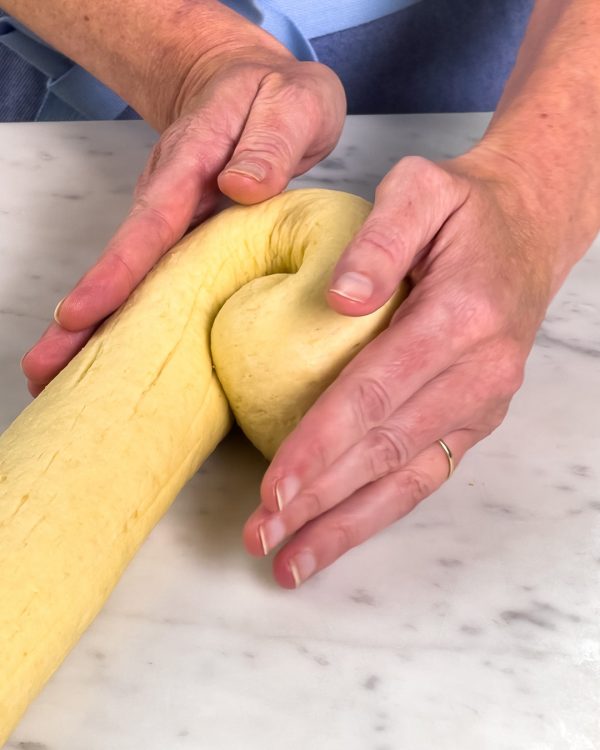
3. Starting at one end of the rope of dough, use your hands to tightly coil the dough, stopping at the midpoint of the rope.
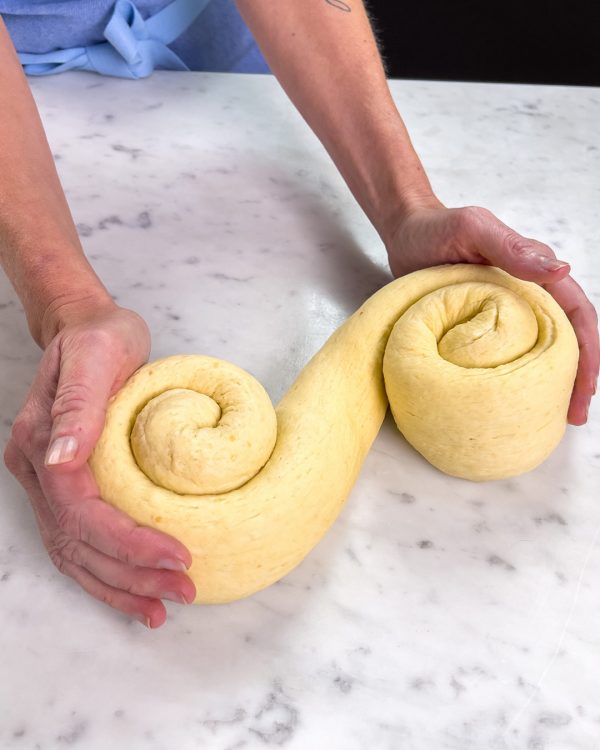
4. Repeat with the other end of the rope, only this time, coil the dough in the opposite direction from the first coil, forming an S shape.
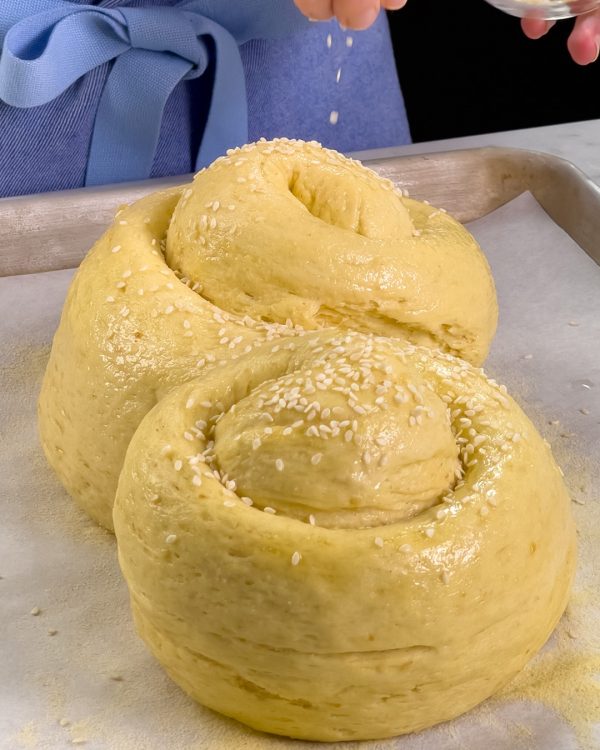
5. When the dough has almost doubled, brush it with a prepared mixture of honey and water, then sprinkle with the remaining sesame seeds.
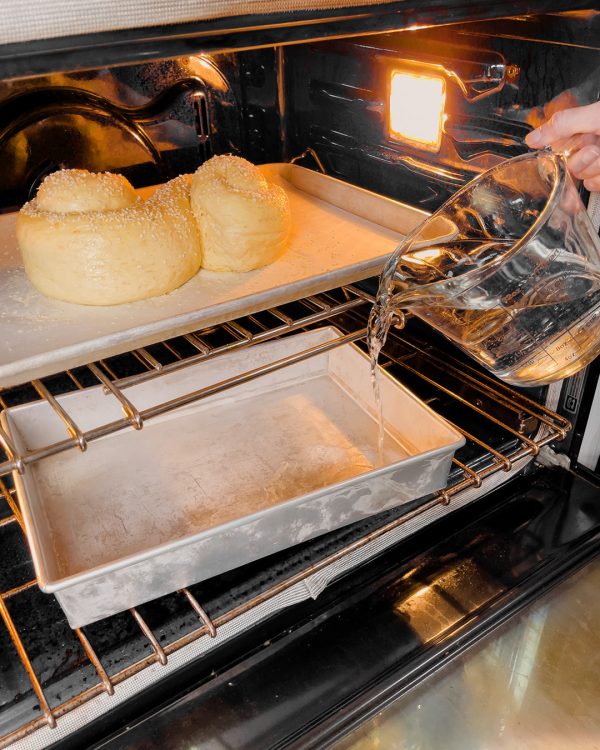
6. To bake, place the baking sheet in the oven, carefully pour the hot tap water into the baking pan and quickly close the oven door.
